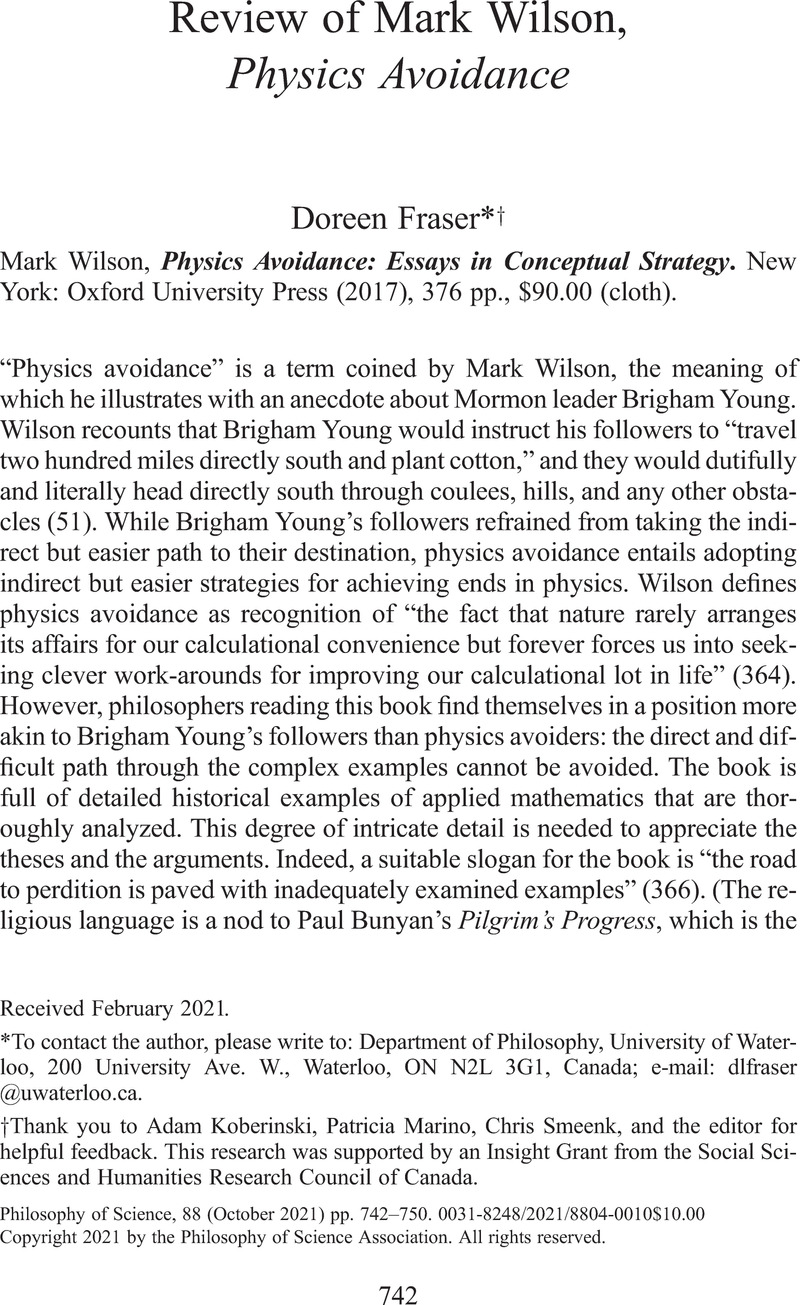No CrossRef data available.
Article contents
Review of Mark Wilson, Physics Avoidance
Published online by Cambridge University Press: 01 January 2022
Abstract
An abstract is not available for this content so a preview has been provided. Please use the Get access link above for information on how to access this content.

- Type
- Essay Review
- Information
- Copyright
- Copyright 2021 by the Philosophy of Science Association. All rights reserved.
Footnotes
†
Thank you to Adam Koberinski, Patricia Marino, Chris Smeenk, and the editor for helpful feedback. This research was supported by an Insight Grant from the Social Sciences and Humanities Research Council of Canada.
References
Batterman, R. W. 2010. “Reduction and Renormalization.” In Time, Chance, and Reduction: Philosophical Aspects of Statistical Mechanics, ed. Huttemann, A. and Ernst, G. Cambridge: Cambridge University Press.Google Scholar
Fraser, D. 2017. “Formal and Physical Equivalence in Two Cases in Contemporary Quantum Physics.” Studies in History and Philosophy of Modern Physics 59:30–43.CrossRefGoogle Scholar
Hancox-Li, L. 2015. “Moving Beyond ‘Theory T’: The Case of Quantum Field Theory.” PhD diss., University of Pittsburgh. .Google Scholar
Hancox-Li, L. 2017. “Solutions in Constructive Field Theory.” Philosophy of Science 84 (2): 335–58.CrossRefGoogle Scholar
Maddy, P. 2007. Second Philosophy: A Naturalistic Method. New York: Oxford University Press.CrossRefGoogle Scholar
Maddy, P. 2008. “How Applied Mathematics Became Pure.” Review of Symbolic Logic 1 (1): 16–41.CrossRefGoogle Scholar
Wilson, K. G. 1975. “The Renormalization Group: Critical Phenomena and the Kondo Problem.” Reviews of Modern Physics 47 (4): 773–840.CrossRefGoogle Scholar
Wilson, M. 2000. “The Unreasonable Uncooperativeness of Mathematics in the Natural Sciences.” Monist 83 (2): 296–314.CrossRefGoogle Scholar
Wilson, M. 2006. Wandering Significance: An Essay on Conceptual Behavior. New York: Oxford University Press.CrossRefGoogle Scholar


